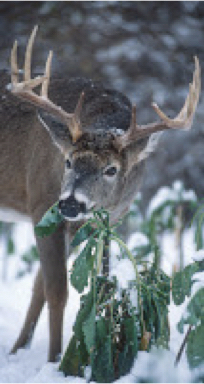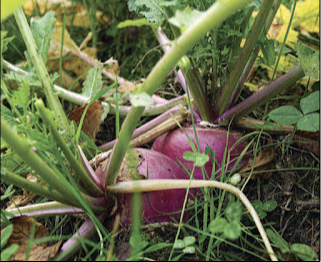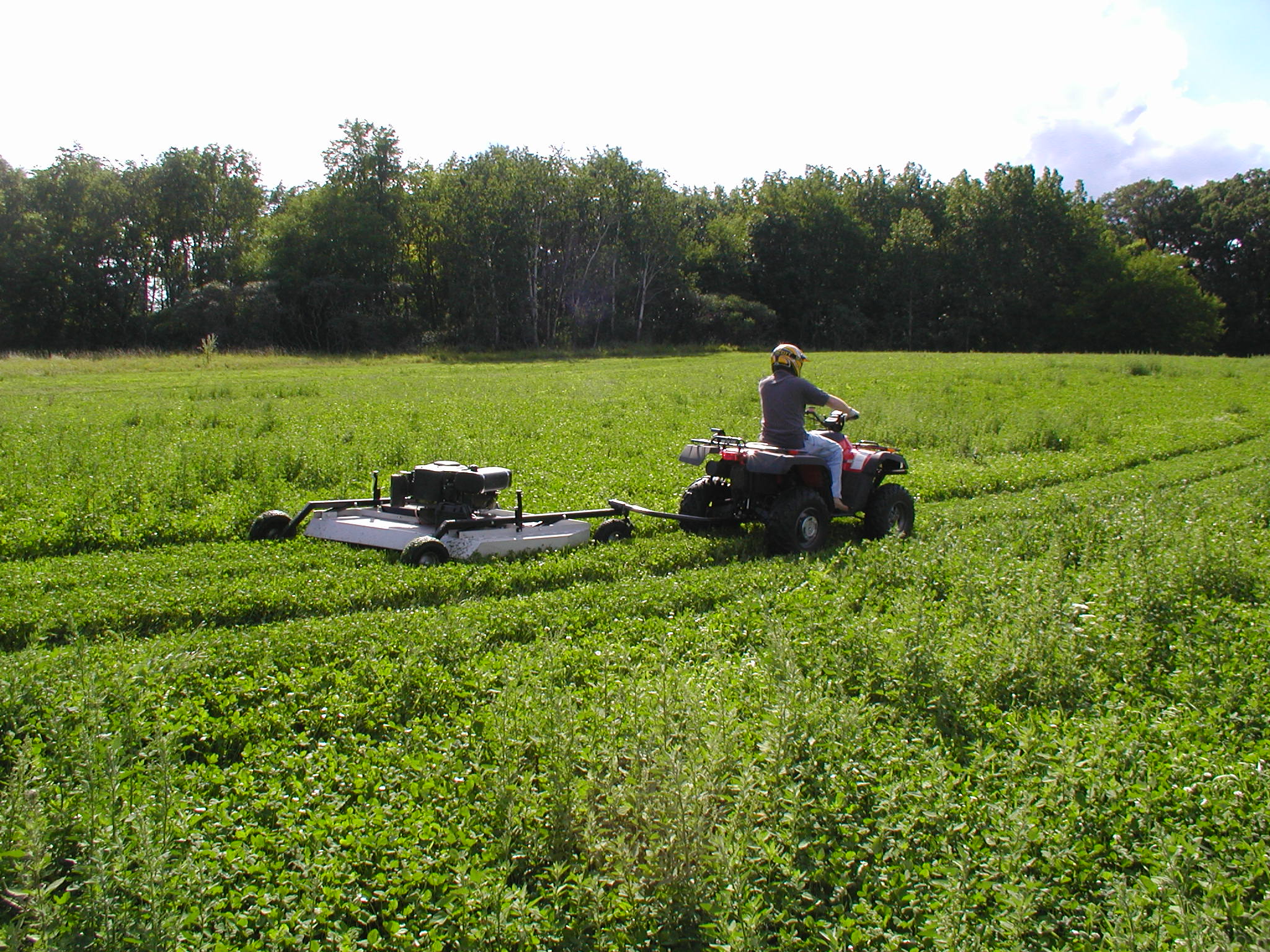
What is the difference between Imperial Whitetail Clover and any other type of clover?
- Imperial Whitetail Clover is the Only genetically developed hybrid clover bred specifically for whitetail deer.
- The main component of Imperial Whitetail Clover blend is a “proprietary” seed variety developed exclusively by the plant breeder of the Whitetail Institute of North America, Dr. Wiley C. Johnson PhD. Over a seven-year period, several clovers were tested for specific traits and the clovers exhibiting these traits were crossbreed until one clover was developed specifically for deer. Some of the traits selected were longevity, growth rate, deer preference, protein content, digestibility, disease resistance, cold tolerance, and drought resistance.
- Imperial Whitetail Clover is a precision blend of specifically selected clover varieties. They have been selected for their ability to attract deer, their nutritional value (high protein) and longevity. Imperial Clover can last up to 5 years and sometimes longer. Selections were also made for cold-heartiness, drought and disease resistance. Also Imperial Clover is blended for specific regions of the country. Imperial Clover also contains Golden Jump-Start which helps produce faster growth, getting deer on your food plots quicker.
- When you combine all these factors, you can see striking differences between the Imperial Clover and other clover products.
|
|
Imperial Clover |
Other Clovers |
|
Yearly protein % |
Up to 30-35% |
17%-20% |
|
Months/Year of Available Quality Forage |
8-12 |
4-5 |
|
Deer Preference |
Preferred 5-1 |
|
|
Cold Tolerance |
Green 8-12 months |
Green 4-8 months |
|
Digestibility |
High, 12 months/year |
Variable |
What is the difference between Imperial Whitetail Clover, Imperial Alpha-Rack and Imperial No-Plow?
- Each Whitetail Institute food plot product is designed for different situations. Imperial Clover is a blend of various clovers designed to be planted in good heavy soils or in other words, soils that hold moisture. A good example would be bottomland soils. Imperial Alpha-Rack is a blend of the proprietary clover developed by the Whitetail Institute and specifically selected grazing varieties of alfalfa. Like Imperial Clover, Imperial Alpha-Rack is also a highly attractive, high protein perennial food plot planting, which is also regionally blended. But Imperial Alpha-Rack is designed to be used in well-drained soils. Because it’s deeper root, Imperial Alpha-Rack does well in dryer types of soils such as on hilltops, hillsides and sandy soils. Finally, Imperial No-Plow was designed to be used in hard-to-reach places where equipment cannot be used or to be used by individuals that do not have access to tillage equipment. Imperial No-Plow is a highly attractive, high protein annual planting that requires minimal ground preparation to plant.
Can I just throw No-Plow anywhere?
- In order for Imperial No-Plow to work properly, you must make good seed to soil contact otherwise it cannot germinate. You do not want to sow the seed in tall weeds and grasses or under a heavy canopy of trees where leaves and debris may inhibit the seed from coming in contact with soil. To plant No-Plow, find areas that receive at least 2-3 hours of sunlight per day. Then mow, weed eat, spray or use some other reasonable method to remove existing vegetation and debris from the area to ensure seed to soil contact. While not necessary, it is beneficial to scratch the ground up where you want to plant by using either a hand rake or a drag behind an ATV or some other comparable method. Finally, for a good healthy start, add a little lime and fertilizer to the area before planting. (See back of No-Plow bag for instructions)
Will Imperial Clover or Imperial Alpha-Rack grow in my area?
- Before the Whitetail Institute made Imperial Clover and Imperial Alpha-Rack available on the market, they tested them in all areas of the country. Through these tests, “regional blends” of Imperial Clover and Imperial Alpha-Rack were developed. Depending on where you live in North America, you will receive a blend developed specifically for your region. The only limiting factor is rainfall, which must be at least 30 inches annually
How much light do I need for the food plots?
- Imperial Clover, Imperial Fusion and Imperial Alpha-Rack need 3-4 hours of direct, broken, or filtered sunlight.
- Imperial No-Plow only needs 2-3 hours of direct, broken, or filtered sunlight
Which food plot product works the best and attracts the most deer?
- All of the Whitetail Institute food plot products are highly attractive to deer and all work well. Each one is designed for a specific situation. If you have access to tillage equipment and are planting in good heavy soil, then Imperial Clover or Fusion should be used. If you have access to equipment and are planting in a well-drained drier soil, Mixes like Imperial Alpha-Rack, Imperial Whitetail Clover and Fusion should be used. If you do not have access to equipment or cannot get equipment to where you want to plant the food plot, then Imperial No-Plow should be used.
Why do I need to create mineral licks for deer?
- Minerals are Vital for many functions, the most recognizable being antler growth and lactation. For instance, the hardened antler is approximately 55% mineral. In most soils and forages across North America, many minerals are deficient. Creating a quality mineral lick will not only help optimize antler growth and lactation, but it will also draw deer to the area as they crave the minerals found at the lick site.
What exactly is the Imperial 30-06 Mineral/Vitamin Supplement?
- Imperial 30-06 Mineral/Vitamin Supplement was developed in 1991 and has been used with much success since then. The Whitetail Institute has also continued to improve 30-06 as new research data has been uncovered. 30-06 delivers essential Macro and Trace minerals along with vitamins A, D and E in ratios and amounts “designed specifically” for Whitetail deer. These are needed for a healthy herd and for bucks to reach more of their genetic potential in antler growth. 30-06 Mineral/Vitamin Supplement is a true, professionally formulated, high quality mineral and vitamin supplement – Not a glorified salt lick. Our exclusive scent and flavor enhancer draws deer quickly and consistently.
What about using salt blocks?
- Salt blocks have been used for years to attract deer, due to the fact that it is cheap and sodium is often lacking in the deer’s natural diet. Therefore, deer are attracted to the sodium found in salt. The problem with salt is that it contributes very little to antler growth or lactation. Furthermore, over consumption of salt is just as unhealthy for deer as it is for humans. It can increase the water consumption of deer, which takes up valuable stomach space and decreases overall food consumption. What deer really need are the proper amounts and integration of macro minerals, trace minerals and vitamins that play a much more active role in antler growth, lactation and herd health than salt does. There is no scientific proof that salt has any ‘positive’ benefits on the health of deer.
How can I help my deer herd through the late fall and winter months?
- Where legal in Canada, to aid in their hunting success or to hold and attract more deer on their properties, many hunters put out bait such as corn, carrots, alfalfa, apples etc. Once November comes along and during the rut and post rut, a deer’s dietary requirements turn to a diet high in fat & carbs, in order to sustain body weight and build fat reserves for the upcoming harsh winter months ahead. What many hunters fail to realize is that there really isn’t a whole lot of protein, carbs or crude fat in any of the above mentioned products. Fortifying your bait stations with a product like Apple Obsession, will have great benefits to the animals coming to your baits. If you were to look at the ingredients on a bag of Apple Obsession, you would find a breakdown of 24% Crude Protein, 13% Crude Fat, 8% Crude Fiber, Molasses, Calcium, Phosphorous, Potassium and a variety of essential vitamins.
- The Concentrated Apple Scent provides the attraction to bring in the deer from great distances.
- For every 25kg bag of corn, try fortifying it with one 6lbs bag of Apple Obsession. Just pour out your bag of corn and spread the Apple Obsession product on top of it. Set a game camera within 15 feet of your bait station and enjoy what happens next. Even the most mature and dominant bucks will pay you a visit.
Why do I need to plant a food plot when I have all kinds of corn, beans, and hay available to the deer in my area?
- Without question, deer utilize many agricultural crops in their diet. The question, however, would be are these crops supplying the right amounts and the right types of nutrients the deer need for optimal productivity? Also, are these crops providing the critical nutrients all year and especially at the critical times? The answer is No. Corn for instance is used very little in the spring and summer, which is when the majority of antler growth occurs. Furthermore, corn is typically only 8% protein, which is far short in the amount needed for optimal antler growth. Deer will eat the silks in the summer but will not get the majority of the benefit of corn until September and October when deer consume the actual kernels off the cob. Unfortunately, most corn raised for agricultural reasons has been harvested by the end of October so deer receive little benefit from the corn during the more severe months of December, January and February which is when deer actually need energy the most. During these stressful winter months, deer are left to scavenge for corn left on the ground by the combine, which with modern harvesting equipment, amounts to very little. Soybeans are a better source of protein than corn and are consumed in the spring. In most cases, soybeans are consumed only in the early stages of growth. As the plants mature, consumption of the plant and protein content drops significantly. Therefore, soybeans can be a good food source for antler growth and lactation early in the spring, but is only a main part of the deer’s diet for few short days or weeks. As the soybean plant matures and consumption decreases, it becomes less and less of the nutrient supply used to grow antlers and produce quality milk. Deer will also eat the actual beans after they are formed and ripen. As with corn, however, most of the benefit of these beans is lost to the combine. There are few types of hay utilized by deer in the spring and summer. Grass hays such as timothy and orchard grass are used very little by deer. Grasses in general are used little by deer due to the fact that deer cannot digest grasses as well as other larger ruminants such as cattle. For the most part, grass hays are only consumed by deer when the grass is very young which will account for only a few short days of a food source. Legume hays such as hay varieties of alfalfa and clover are utilized by deer in most cases more than any other agricultural crop. These legume hays are designed for rapid growth and fast maturity to allow several cuttings per year and therefore increase total tonnage. Many times, these legume hays are grown for large ruminants such as beef cattle or dairy cattle. Because cattle have a large rumen, they are able to better utilize mature forages as compared to deer, which have smaller rumens and are less able to digest mature forages. For instance, deer will consume leaves from these forages and not the stems due to the fact that the stems have a low digestibility. What this all means is that deer utilize these agricultural legumes usually only when they are young. Like soybean plants, as the plants mature consumption decreases due to the decrease in digestibility. As stated earlier, these agricultural legumes are developed for rapid growth to produce tonnage. Therefore, these food sources are normally only used for short periods of time after the hay has been mowed. Again, with hay we see an inconsistent food source. In short, all of these agricultural plantings are designed for “agricultural” purposes, Not for feeding “deer”. They create nutritional gaps which Imperial Whitetail products fill.
- If your goal is to provide a food source for deer to promote antler growth, lactation and to draw deer to a certain area you should plant a food source designed specifically for deer. This food source must be consistently high in nutrients and high in digestibility especially during the spring and summer. For instance, Imperial Whitetail Clover is designed to stay in a vegetative state longer than hay variety clovers. Furthermore, Imperial Whitetail Clover provides up to 30%-35% protein at least 8 months out of the year (when there is usually no snow). And when hay variety legumes have turned brown, Imperial Whitetail Clover stays green and productive.
- The best way to sum it up is with this analogy: if a bodybuilder (whitetail buck) is trying to increase muscle mass (antler growth) he must have the right nutrients and consistently have these nutrients available for consumption. A bodybuilder needs large amounts of protein to build new muscle. If all he/she has available is potatoes he will not be receiving the protein needed for optimal muscle growth. Even if there are more potatoes than what the bodybuilder can eat, it does change the fact that potatoes are low in protein and the bodybuilder will not be optimizing muscle growth. Furthermore, if the bodybuilder has protein available 1 day out of the week or 1 week out of the month he again will not be able to optimize muscle growth. The bodybuilder must have the right nutrients at the right times just as a buck must have the right nutrients at the right time to optimize antler growth.
Why is Imperial Whitetail better than what I can buy at the COOP/seed store? The say they’ve got “the same stuff” a lot cheaper...
- Imperial Whitetail seed blends are impossible to duplicate as they are proprietary to WINA.
- Imperial Clover is a legitimately researched product for WILD, white-tailed deer.
- Imperial Whitetail is regionally blended to insure the perfect product for your environment/climate conditions.
- You will notice faster establishment because of seedling vigor which gets deer on your plots quicker and helps the forage compete better with weed and grass competition.
- Imperial Whitetail offers the highest possible value of anything you can plant, especially when it matters most, which is during the antler-growing months of spring and summer.
- You will almost always get at least one year longer performance, often more, from Imperial Whitetail.
I have to buy cheaper seeds to get the food plot acreage I want. Can you offer any advice on what to do?
- We occasionally hear the comment that our seed is expensive. When all things are considered, it’s the least expensive food plot product you can plant. Here’s why that is the case.
- If you were shown how to plant Imperial Clover for less than $.014 per day would that be cheap enough for you to consider it?
- The cost of Imperial Clover (40lb of seed/ 5 acres) is around $100CDN per acre. When you compare just the cost of other, cheaper seeds, they may seem less expensive, but are they really? Imperial Clover can last 5 years without replanting so you need to divide the cost per acre by the 5 years that it can last, and you’ll get a seed cost of $20.00 per acre per year. Divide $20.00 by 275 days because in most parts of Canada (snow factor), that’s how long Imperial Clover will feed your deer high protein forage, and you come up with about $.014 per day.
- This doesn’t take into consideration that for the “cheaper” seed you will:
- Purchase the ‘’cheaper’’ seed every year
- Experience tractor wear-and tear to plant every year
- Exhaust more valuable, personal labor time every year
- And experience all the other costs associated with establishing a food-plot more frequently
- Don’t forget the high protein, antler-building forage that your deer have access for at least 8 months of the year (no snow on the ground). You will not get that high protein with the cheaper seeds.
- Also, nothing attracts deer to your plots like Imperial products. If you want more deer, then this has to be a consideration.
- We could go on and on about why nothing is better or less expensive that Imperial products but let us just say, if money is tight or not, Imperial seeds are your best investment.
- One last point, hunters think nothing of spending $40,000 on a 4-wheel drive pick-up, thousands of dollars on an ATV or RTV, thousands of dollars on weapons, hundreds of dollars on camo clothing, scents etc. Then they try to save $25 on a bag of seed when the food plot is the only thing that can actually help harvest a better quality deer.
- We strongly suggest investing your money where it can make a difference, in the quantity and quality of your deer.
What is the ideal soil pH? How much lime to do I need to bring my pH level up and how long will it take to get it to what I need it to be?
- The ideal pH everyone thrives for is 7.0, which means the soil is neither acidic nor alkaline. But most Whitetail Institute products will grow very well in pH levels of 6.0 – 7.5.
- Crushed Lime is best because it is easy to spread with any type of spreader. It can easily be purchased at most any CO-OP or Feed store. ‘’Crushed Lime’’ and NOT Pelletized Lime, penetrates the soil the fastest and will react much quicker to bring that pH level up to the desired level.
- Once applied, it will take approx. 3-4 weeks to bring up the soil pH.
- We do recommend tilling the soil prior to your lime application or even applying the lime first and then tiling the soil to blend it into the ground.
Use this formula to gauge the quantity you will need:
1000lbs of crushed lime/acre brings pH levels up by ONE number.
Example: Existing pH level of 5.4…with 1000lbs of Crushed Lime = pH level of 6.4
How deep do I need to till the soil when preparing my seedbed?
- We Strongly Recommend NOT tilling your soil more than 3”-4” deep. If you go deeper then you risk bringing up to the surface and awakening thousands of dormant weed seeds which were previously beneath the soil and not growing.
- Once these ‘’bad weed’’ seeds become exposed to water and sunlight, they will grow and compete with your plants resulting in an eventual weed problem for your food plot.
How do I control bad weeds and what herbicide can I use for my weed problems?
- The best weed control tool is ‘’mowing’’! Mow your Perennial food plots at least twice a year at the first sign of the clovers coming into flower. This will strengthen the root system of the plants, which is unique to our line of products. Your plants will better sustain overgrazing and your bad weeds will have a more difficult time to compete with the clover, chicory and alfalfa. Mowing along with adding the recommended type/amount of fertilizer annually will also prolong the longevity of your Perennial food plots.
- The other way to control weeds is by being proactive and applying higher than the recommended quantity of seeds per acre. The objective here is that by applying more seeds to the acre when planting, you are trying to choke out some of the nuisance weeds.
- Whitetail’s herbicides Slay® and Arrest® that are sold in the US are not legal in Canada and we therefore do not carry them. But we can send you additional Herbicide information upon request for very similar types of herbicides that are available from the CO-OP’s in Canada and which you can purchase if you have the appropriate licensing for it.
How many times can I plant Annuals (Winter Greens, Tall Tine Tubers, Beets & Greens etc...) in the same food plot (same soil)?
- You should never plant Annuals more than 2 consecutive years in the same food plot/soil due to the minerals that these plants drain from the soil. The 3rd year should be seeded in a ‘’rotational crop’’ that does not contain Annuals. Perennials here are an excellent choice as they restore nitrogen and phosphorus into the soil that the Annuals have drained. Imperial Winter Peas Plus, Imperial Beets and Greens and Imperial Forage Oats Plus are excellent Annuals that can be used as rotational crops.
What is the shelf-life / expiration on the seeds?
- You can expect a shelf life of up to 8 years on any of our seed products. All of our seed products have a ‘’packaging date’’ indicated on the “ingredients label”. The inoculant (green blue powder coating on the seed) lasts 3yrs and is used to help with speedy germination rates. Even if the inoculant is expired, the seed is still very good and it will germinate. It is possible to add inoculant to your seed if it has passed the 3yr date indicated on the bag. Simply ask your local CO-OP to sell you some. It is inexpensive. They will need to know the quantity (lbs) of seed you are buying the inoculant for. Simply pour the seed in a clean bucket, add the inoculant and mix it all up. But even with the inoculant expired; the loss of germination is nominal and not a factor.
- There is no expiration date on any of the Minerals or Attractants
What is the New IMPACT attractant and why should I use it?
- Fall and winter in most parts of Canada can be extreme bringing cold weather, abundant snow and scarcity of food. Along with the r
- ut, this creates stressful times for deer. Bucks can lose up to 25% of their body weight and pregnant does can also be negatively affected by the scarcity of food. IMPACT offers your deer a concentrated source of energy, protein and vitamins they need for the late season and early spring when nourishment is vital.
Beware of ‘’Wannabes’’ and false imitations!
- There are several so called ‘’deer nutritional’’ companies out there who state they are competitors. These companies are out to make a quick dollar off the consumer who may not be aware of certain elements that they need to closely look for whenever buying true and authentic deer nutritional products. Here are some tips to help you make the proper educated decision whenever you are at a store and looking to spend some of your hard earned money on products for food plots, deer attractants or mineral/vitamin supplements. (See page 7)
- First and foremost, ALWAYS look for the INGREDIENTS on the back of the packaging! Without the ingredients listed and their break-down, how do you know what’s actually in the bag? Whenever we buy milk or cereal for our children, we look and trust the ingredients on the packaging to make the right choice for the health benefits of our families…why not have the same information provided to you for ‘’deer nutritional’’ products? If the products truly are conceived specifically for whitetail deer and not for cattle and horses, the ingredients will be listed for you and there will be nothing to hide.
- Anyone can buy seed from the COOP, print an attractive bag with a photo of a deer on it and give it a catchy name; it’s called Marketing. If you are going to spend your hard earned money on “Agricultural or COOP Seeds” readily available at your local COOP or AGRI dealer conceived for cattle, horses or sheep having very low protein levels, difficult digestibility, low palatability and not much longevity to your plants once they grow…then you are much better off taking a trip to the local COOP, buying several varieties of Agricultural Seeds and creating your very own seed mixes. This is exactly what the so called ‘’competition” is doing. You’ll get much more value for your dollar purchasing the COOP seed yourself as you will be able to buy much more seed volume at a much cheaper price than if you were buying the ‘’wannabe’’ brand.
- Very Important: When it comes to Authentic deer nutritional seed mixes, look for the ‘’Germination Rates’’ on the tag/sticker of the products. The listed and verifiable Germination Rate assures you that a Seed Analysis has been executed by the manufacturer for that particular bag of seed that you are looking to purchase. The Seed Analysis will have been carried out by a certified and independent 3rd party lab. That analysis will in turn determine the germination level for each ingredient in that seed mix. This testing is expensive to the manufacturer which is why most seed companies do not provide the information on their bags. They simply don’t get them tested. By Canadian law, when importing seed into Canada, this Germ Rate needs to be listed on the analysis sticker and is the guarantee from the manufacturer and the Canadian government called the CFIA (Canadian Food Inspection Agency) that the seeds will germinate. Most germ levels in Whitetail Institute products have a minimal 85% germ rate, meaning that 8.5 out of every 10 seeds will germinate when making contact with the soil.
- Look to see what the Protein Levels are for the product you are looking to buy. High protein levels are best as it has been scientifically proven that the more protein we offer to our deer, the better nutrition we are providing for them. In turn antler and body size gets bigger, lactation quality in females improves and strong immune systems are developed.
- The next time you see the following “key” words on a competitors packaging: Researched, Developed, Tested, Proven etc… be sure to inquire a little further, possibly on the manufacturer’s website or pick up the phone and ask them where their research lab or research centre is located and that you’d like to visit it? You will quickly learn that almost always you will receive a silent response. If they actually have a Research Centre, they will gladly allow you to visit as they will be exceptionally proud of their state-of-the-art facility. Often times they will quickly derive the conversation to: “well we have a deer specialist helping us to develop our mixes”. If you are indeed able to get that person’s name that is deemed the “deer specialist”, be sure to look up his/her credentials. There are very few deer specialists in the world, much less so in Canada. There are even less deer biologists who work closely with Agronomists to develop quality authentic whitetail deer products. WINA employs (full time) some of the very best on the planet and personally know the others by first name. Bottom line is that there are no authentic deer nutritional companies based in Canada.
- Credibility and brand awareness: Longevity = Success = Longevity. Any entrepreneur who has been in business for a long time understands credibility and brand awareness? WINA is more than 30 years in the business and Deer Nutrition is all they do! The WINA logo is the most recognized, trusted and respected in the deer nutrition industry. It’s also the one that sets the bar for the others.
- Lastly, like many goods and services, price usually determines what you are getting for your dollar. If everything is priced relatively similar and one or two products stand out on the store shelf as the ‘’deal of the day’’ because of cheaper pricing, tell yourself just that, it most likely really is too good to be true. Just like the price of hamburger meat (beef) has its value, so does the price of a good AAA rib-eye steak (also beef but of premiere quality). Seed is relatively inexpensive when it’s from the COOP because it’s been created in volume for ‘’livestock’’ and not for wild Whitetail Deer. When WINA creates deer nutritional seed mixes, they are researched, developed and tested extensively over time before ever being released for resale on the market. So they WORK! That kind of quality and research of course comes with a slightly higher price.


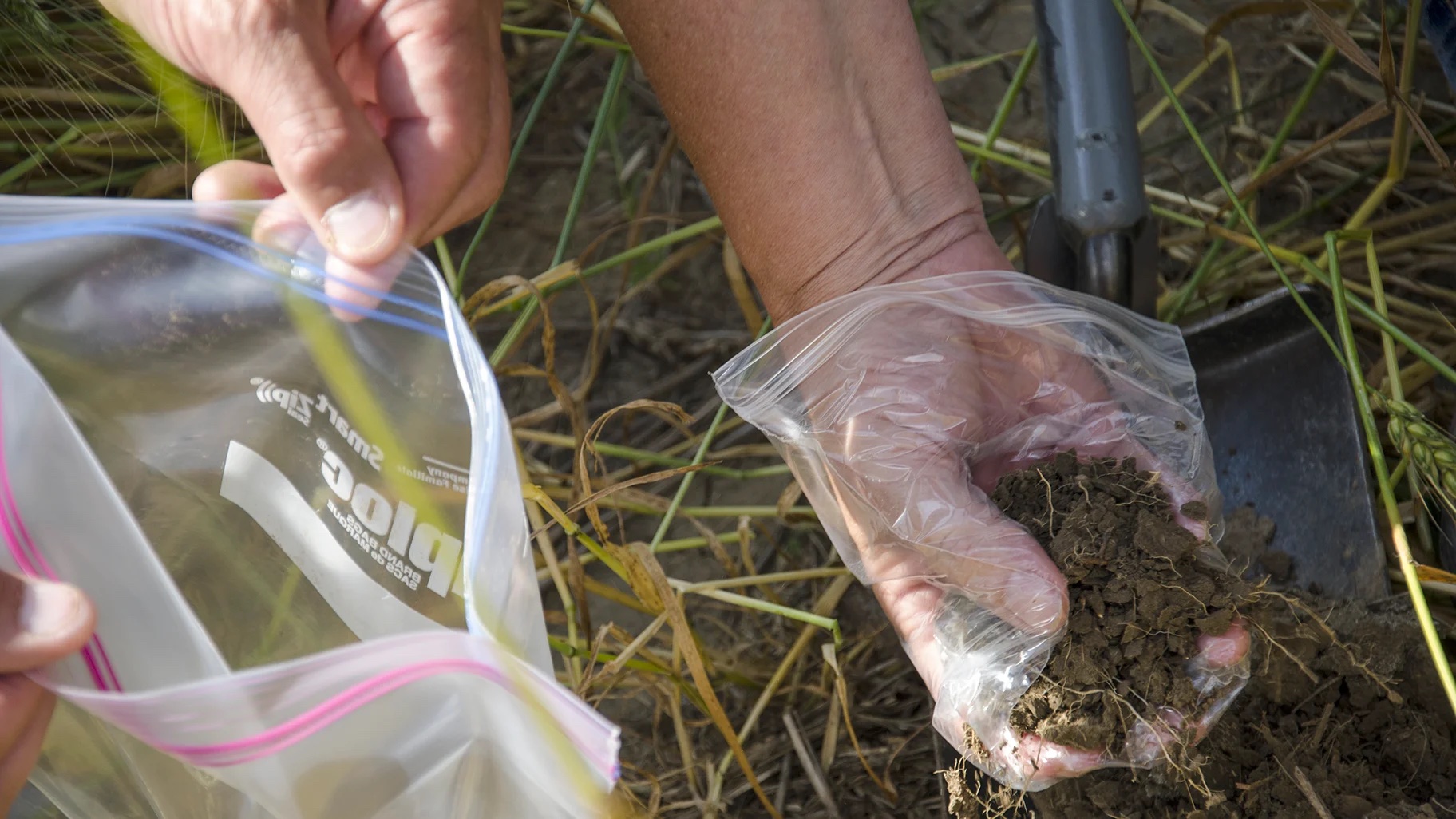

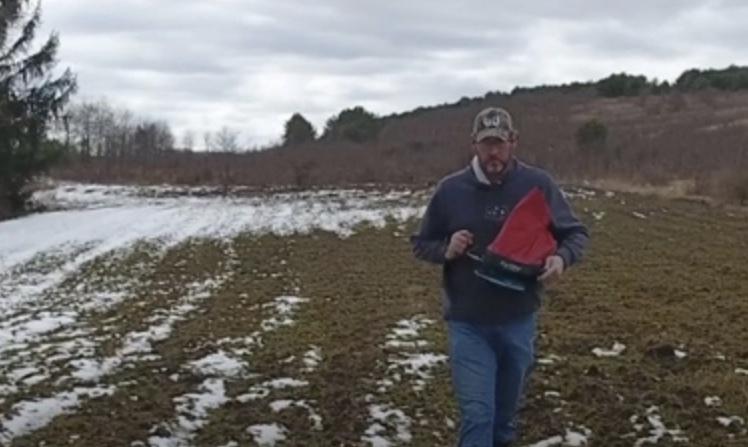 How do I frost seed?
How do I frost seed?


